Drivers in Grand Teton Are Urged to Keep a Distance From Wild Moose After a Series of Reckless Incidents
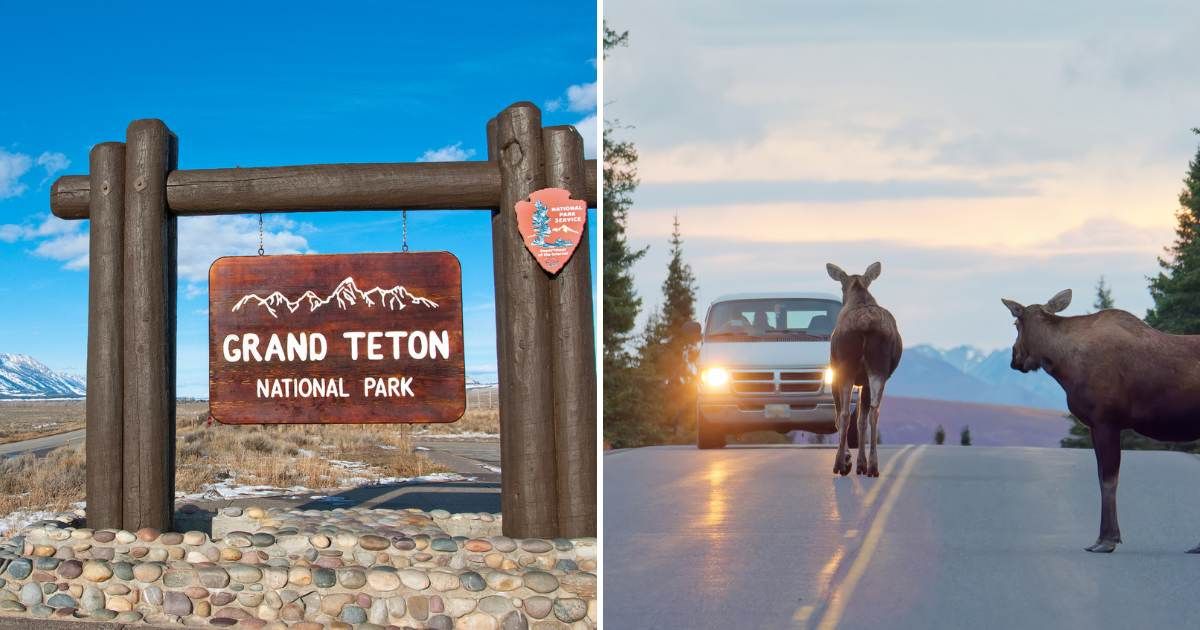
“There seems to be a river of rage just below the surface in moose that has no basis in logic,” author Gary Paulsen wrote in his memoir Guts, according to Reddit. His description materializes in real life when autumn befalls upon the landscape of Grand Teton National Park in Wyoming. Moose, these majestic cousins of the deer family concentrate in the various lowland areas of the park, such as wetlands, banks of the Snake River, roads, highways, and willow flats, to participate in the much-awaited rutting season. Fueled by extreme competition and desire, this time of the year brings out the most aggressive tendencies in these animals. Despite their untamed demeanor, these animals are dying brutal deaths this year. Humans and their speeding cars are to blame, according to Cowboy State Daily.

By this time, as the season settles into cooler temperatures and stillness pervades the mist, the number of visitors starts to dwindle. But unlike the previous shoulder seasons, this year the visitations haven’t dipped. The season seems to be busier than ever. While it has its own unique postcard appeal to the park’s various landscapes, when it comes to wildlife, these humans tend to be a bit intrusive, even meandering.

In the past five months, six moose have been killed by colliding with vehicles, including the famed bull named “Elk Antler,” known for its distinguished paddles, or antlers that resemble two golden palms carved out like the gnarly branches of a tree. Apart from the Elk Antler, four other moose were killed by human cars at the national park. After its death on October 10, near Schwabacher Landing, tour guide Tristen Moffett of Jackson, reflected that these vehicles, mostly cars or buses, often hit the bull moose by speeding close to the area where they are rutting.
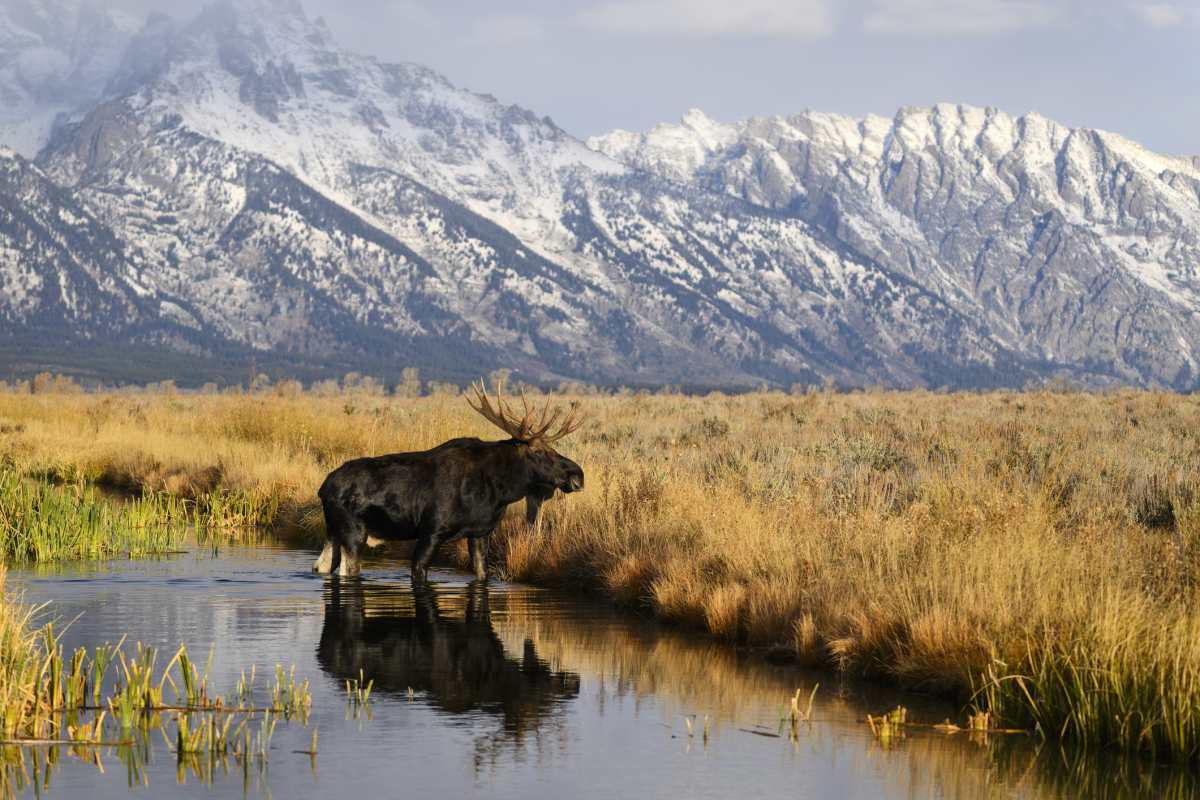
When disturbed or threatened, a moose whips its long, spindly legs, smacks its lips, raises its hackles, stomps, kicks, and often bumps into the hurtling vehicles, dying. At Grand Teton, sadly, this is a common sight. A 2022 Nature Conservancy report found that between 2016 and 2020, an average of 69 moose per year were hit by cars. The latest incidents unfolding in the territory are only magnifying this picture of concern.
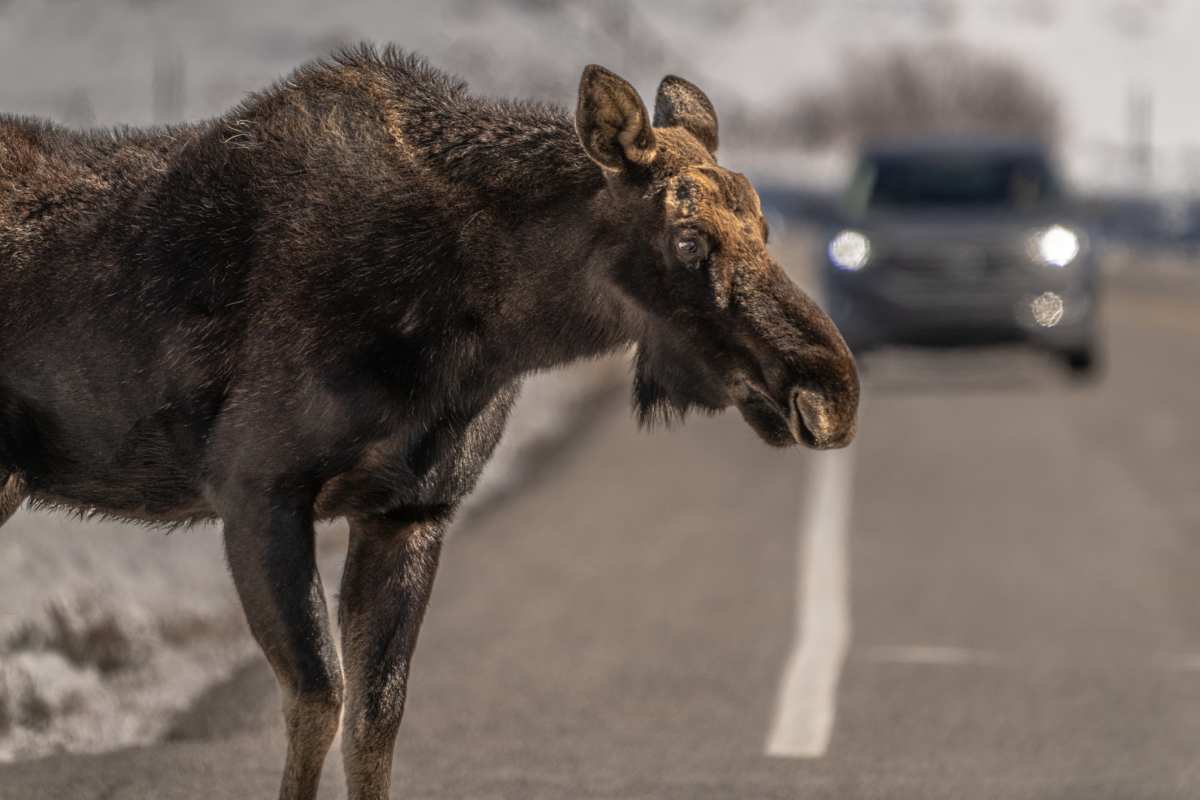
The reason is both an unwelcome human intrusion and the demands of the season. According to the explanation of Moffett, spring and fall are the seasons when wild animals like grizzly bears, bison, elk, foxes, and moose are running high on hormones. Their bodies are already weakened after surviving the harsh winter. A slight prodding or disturbance from the tourists is enough to agitate them. At this time, they prowl along the lowland areas to feed on calorie-rich foods like willow, birch, and aquatic plants, as well as to search for mates. As the seasons transition, they are usually sauntering along highways.
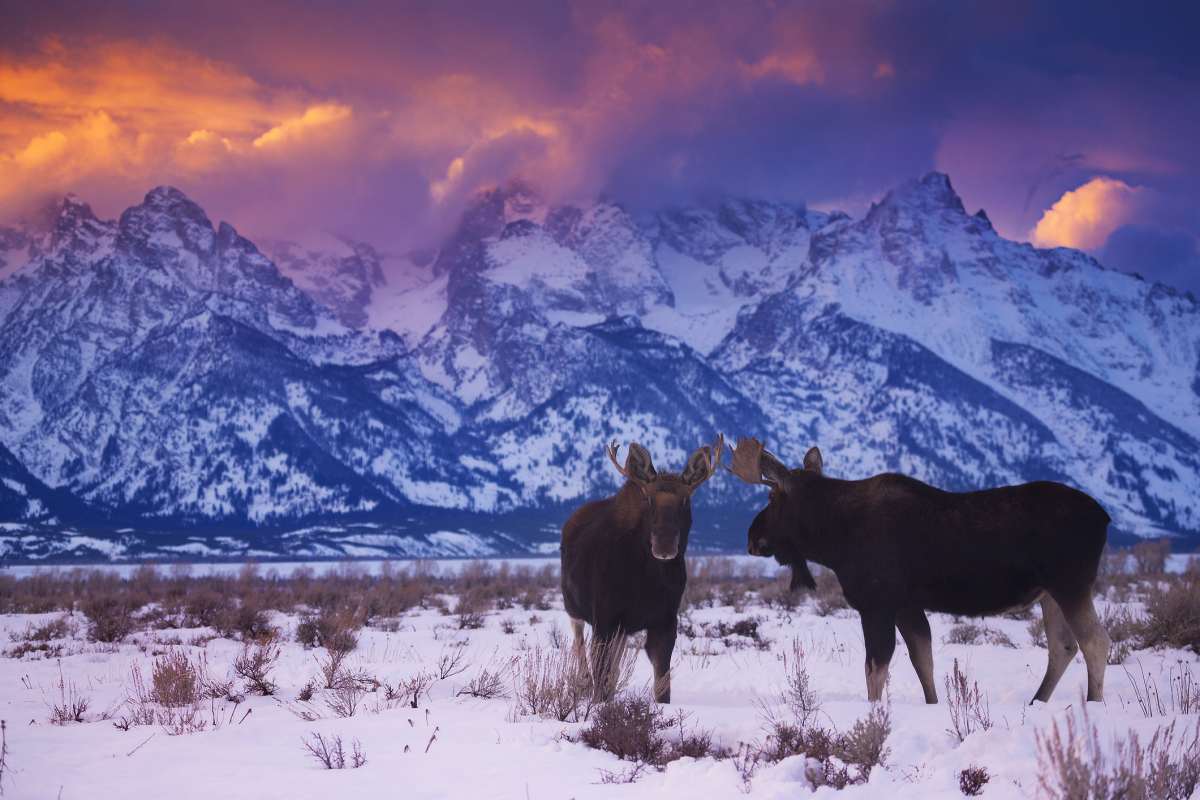
“They are running everywhere,” looking for cow moose to mate with, and crossing roads more frequently, said Moffett, who owns Roam Wild Photo Tours. Evan Watts, who runs Watts Wildlife Photography tours in Yellowstone, said he’s seen several moose crossing highways recently there. Moffett noted that while traffic has increased, people’s patience has diminished.
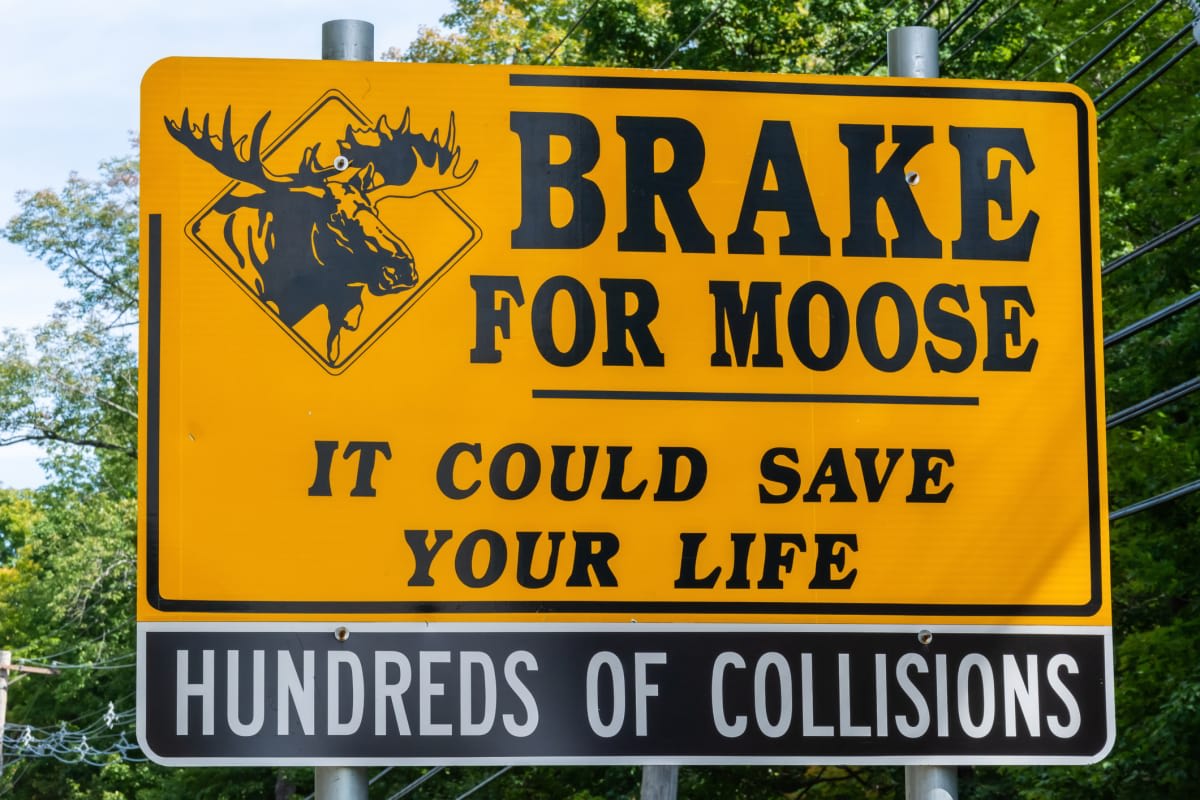
He grunted that he often spots visitors passing double yellow lines, racing from one point to the other, caring for wildlife only enough to capture them in their mobile phones and cameras to post on Facebook or Instagram. People, he added, are bringing “city mentality” to the parks. These jeep-sized animals are “best seen from a distance with a car,” a Reddit user rightly suggested. Meanwhile, Grand Teton’s premier bull moose, named Hoback, is safe so far, but it wouldn’t be too surprising if he, too, ends up crossing the rainbow bridge soon. If it happens, it would be another failure, not of the animal, but of humans and their runaway cars that have gone out of control.
More on Green Matters
Grand Teton Visitors Are Worried About a Major Problem Amid Government Shutdown
A Strange Problem is Troubling Grand Teton National Park and It Has Everything To Do With Poop